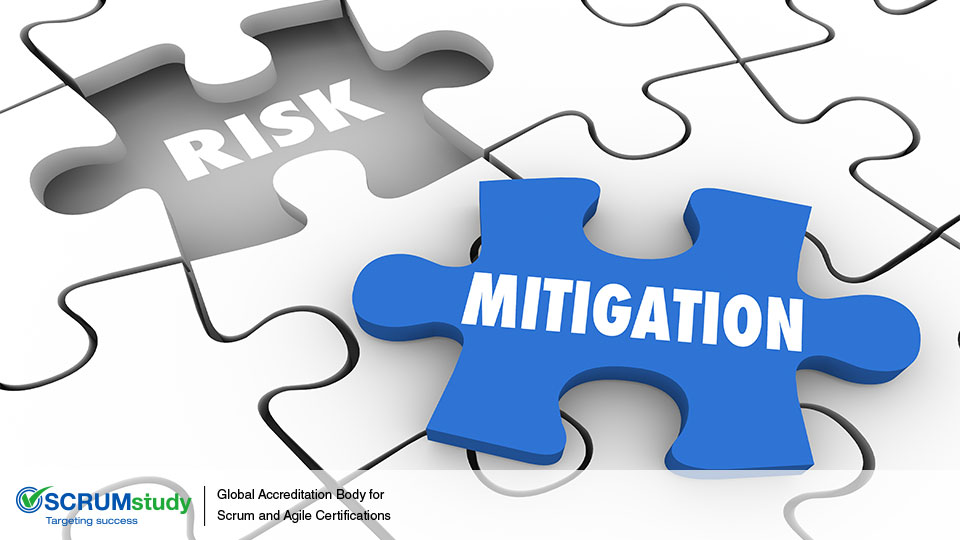Risk Mitigation in Scrum
Posted by SCRUMstudy® on February 17, 2023
Categories: Agile SBOK® Guide Scrum Scrum Master Sprint Backlog
Scrum is a light-weight framework for project management which is used for complex product development in volatile market conditions. With high competition, companies have to develop products fast and innovatively always adding value and greater customer satisfaction. Quick decision-making and prioritization help mitigate risks in a project. The constant flow of new information changes requirements which Scrum is tailored to handle well and risks are turned into valuable deliverables.
The Product Owner starts the Scrum cycle with identifying requirements of the client through a Business Stakeholder Meeting. It is up to the Product Owner to clearly outline the customer needs and place them in a Prioritized Product Backlog. Here risk plays a crucial role as it becomes essential to determine high risk elements and place them high in the backlog. The sooner these elements are identified and dealt with in early Sprints the better for the success of the project as the possibility of mitigating larger risks diminish with the progress of the project. Here the Product Owner plays a significant role in discussing various elements with the Scrum team and clarifying doubts. Thus the Product Owner gets a great deal of help from the Scrum Team in prioritizing requirements which the team in turn breaks down into definite User Stories and further into tasks.
The involvement of various business stakeholders in the project with the technical personnel makes a mark in risk mitigation in Scrum. The “input-development-feedback” mechanism which is continuous in Scrum keeps everything transparent and pitfalls are readily visible. The Prioritized Product backlog is constantly refined, i.e. it is analyzed and revaluated all the time as requirements change and/or issues crop up as development of a feature leads to finding a new element which demands immediate attention. Scrum as an Agile framework lets you do exactly that – be agile and incorporate changes in short notices. Scrum’s core principle of Empirical Process Control is thus practiced and upheld. In Scrum, planning is seen as an ongoing process and is represented by refining of the Product Backlog and the Sprint Planning Meeting at the beginning of every Sprint. Unlike traditional waterfall methodologies where planning is detailed and upfront, this Scrum practice zeroes in on the risk factor. Yet, it is not to be taken for granted as active participation is required by the Product Owner, the Scrum master, and the Scrum Team to keep the mechanism running smoothly. Issues not addressed for long durations may turn into potential risks and take up more time and effort to resolve as time passes.
Some of the Scrum practices which help in mitigating risks are:
1. Flexibility of adding and modifying requirements.
2. Regular feedback through the iterative nature of Scrum.
3. Team ownership of Sprint Backlog items.
4. Transparency ensures detection of risks and early communication.
5. Iterative delivery reduces investment risk.
In Scrum, it is important to learn and practice its basic principles which collectively and naturally help in effective of risk management.

